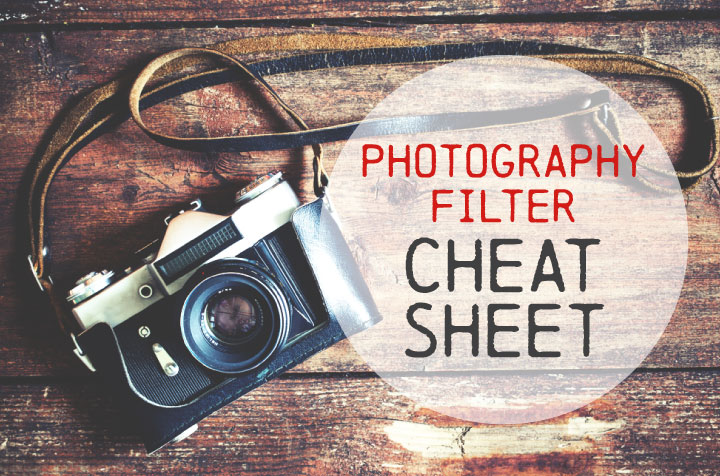
Not everyone finds lens filters necessary, especially in this increasingly digital age. However, many photographers, especially those who have a particular interest in landscape and other natural photography, still love the way lens filters can enhance colour in their images and make difficult light conditions a lot more manageable.
Filters are useful in a wide range of situations and proper use of them can add a valuable dimension to your photography. The graphic below aims to demystify lens filters and give you a handy guide to when and where to use the appropriate ones. Whether you are interested in travel photography, sports photography or you would like to try your hand at a range of disciplines, you will find various filters mentioned below useful.
For more great photography tips, including a fantastic cheat sheet for manual photographers, visit the photography section of The Studio.

Transcript
Despite the modern ease of digital post-production, the practice of using lens filters is very much alive.
From managing difficult light conditions to creating certain moods – there’s nothing like capturing the perfect shot, right there and then.
Why use filters?
Filters to your camera are what sunglasses are to your eyes.
They:
- Offer protection
- Alter light
- Reduce reflection
- Enhance colours
But just as sunglasses distort your vision indoors, using a filter in the wrong situation can ruin your shot – so it’s important you know your stuff.
| Filter | Suitable for | What it does |
|
Any | Protects your lens from dust, dirt, fingerprints, moisture and scratches. |
|
Any | When using SLR cameras UV can interfere with photo quality – appearing as a haze. Modern DSLR cameras have an inbuilt filter, in which case UV filters are used as another form of protection. |
|
Any | Used to reduce reflections, increase contrast and enhance colours. The effects from polarizing filters cannot be replicated during post-production. |
|
Landscape and flash photography | Effective for avoiding overexposure when large apertures are required. Ideal for capturing long exposures. |
(Example of how these filters attach) |
Landscape photography | Used to balance exposure in high contrast situations between bright skies and dark landscapes. Best used when photographing flat horizons – such as an ocean view. |
|
Landscape photography | Used in high contrast situations with uneven landscapes – such as mountain ranges. Avoids over and underexposure. |
|
Landscape photography | Transitions from a dark centre to a lighter edge. This allows for photographs shot against the sun to be captured as they appear in person – without overexposure. |
|
Any | Suitable for colour correcting, subtracting, blocking and boosting. Perfect for film photographers wanting to correct or add colour to a shot. |
|
Any | For correcting unrealistic tints of colour, or to add one. Changes the mood and atmosphere of a photo by altering the white balance. |
|
Macro photography | Allows for close-up shots by shortening the minimum focussing length. Lenses come in a range of strengths also known as dioptres, with higher numbers indicating a closer focal point. |
no filter | red filter
no filter | orange filter
no filter | green filter
yellow filter | no filter |
Any | Multiple filters are used to enhance B&W images. Red, orange, green and yellow filters are used bring out certain monochrome shades. |
The digital darkroom can’t do everything, so know what filters to use and when. Just remember – practise and experimentation are your keys to success.
Sources
All Things Photography. (2015). Put a few photographic filters in your bag. all-things-photography.com
Babbidge, G. (2013). Lens filters buying guide. wexphotographic.com
Cambridge in Colour. (2015). Graduated neutral density filters. cambridgeincolour.com
Dunlop, J. (2015). The essential guide to filters for digital cameras. expertphotography.com
Exposure Guide. (2012). Lens filters. exposureguide.com
Mansurov, N. (2011). Lens filters explained. photographylife.com
Nikon. (2015). Bokeh for beginners. nikonusa.com
Rowse, D. (2007). Screw in close up (Macro) lenses. digital-photography-school.com